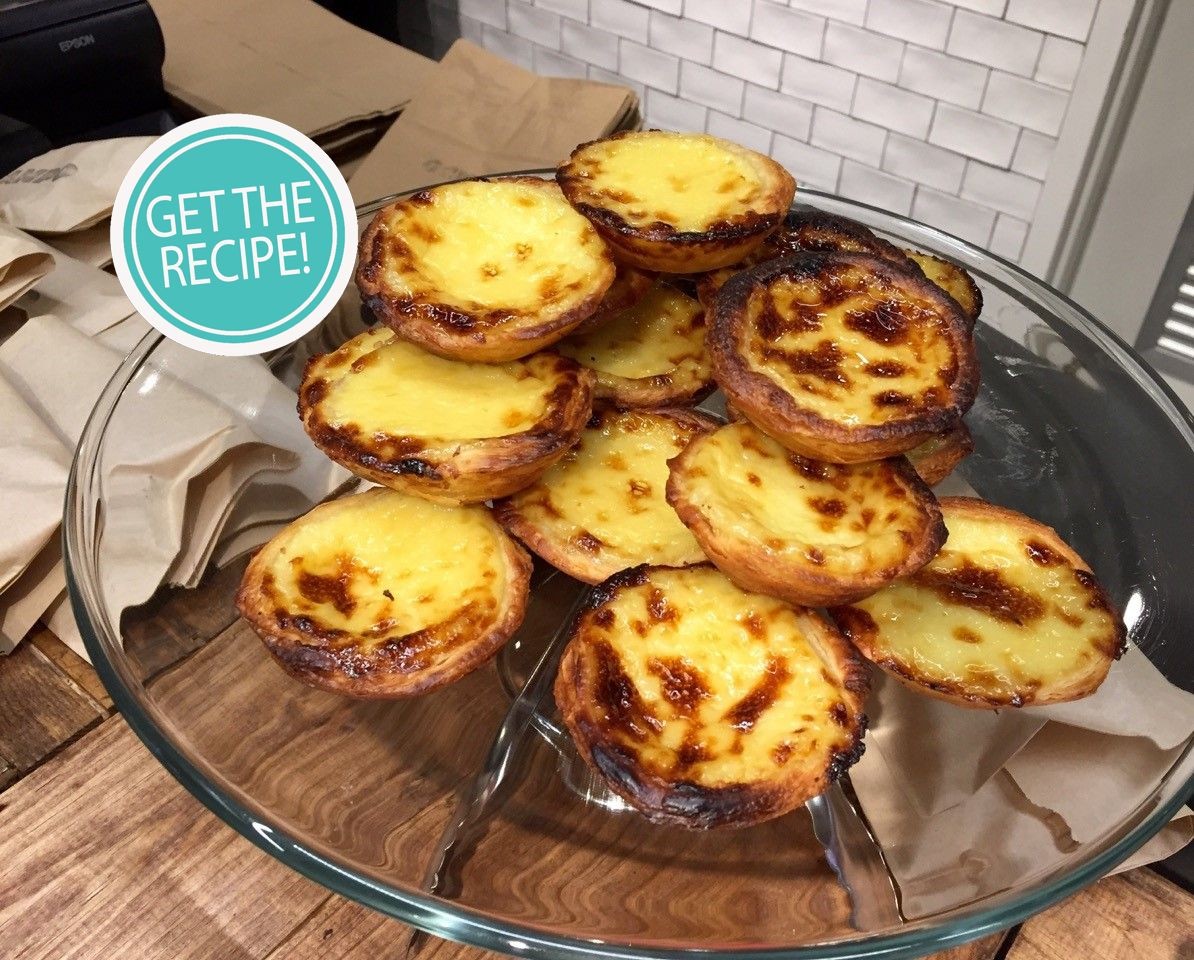I moved into Toronto’s Little Portugal neighbourhood in the autumn of 1985. My neighbours became friends and their generosity soon burdened/blessed my fridge and pantry. Gifts from their gardens and grape vines, and bottles of their vicious homemade wines, made their way from their home to mine. I’d send over chocolate chip cookies, by way of thanks, which always seemed to puzzle them.
But of all the treats received my favourite were the pastéis de nata, rich tarts of blistered custard in buttery, crackly pastry. My neighbour Adrianna baked them every Friday, mostly for her four sons. But every so often, she’d send one of her lads across the street with a plate of pastéis to sweeten my weekend.
“Anna,” she’d say when I’d head over with the empty plate (her hand on heart, the other raised to the heavens), “I wish you to be blessed with many, many sons, as I am blessed.” I remember thinking Not a snowball’s chance in hell, dear lady.
The years came and went. I moved to Ottawa, had four sons, and thought often of Adrianna and her ‘benediction.’ And though I forgot about pastéis, for things Portuguese in this country – the neighbourhoods, certainly, but the cuisine in particular – I have long held a soft spot.
We aren’t blessed in my home town with great Portuguese food. Since the demise of Ottawa’s Café Spiga and El Meson — two grande dame restaurants run by Portuguese families, now retired – I head to Montreal for the good stuff.
Last spring I did just that. Arriving by train around lunch time, I made my way to Café Vasco da Gama on rue Peel. Following a meal of lupine salad, bacalão fritters and a duck confit sandwich sweetened with a fig compote and washed down with a crisp white wine from the Douro Valley, there was pastel de nata for dessert. Working through a second tart, I asked my server a question about the pastry. Did she know how it came to be so crackly and ruffled, like a little girl’s party skirt?
Five minutes later, out from the kitchen came Julia de Castro Nascimento, pastry chef. “May I show you how we do it?” And so she did, at my table during the busy-ness of lunch service, starting with how she had rolled the puff pastry, dizzy with turns and well infused with butter, into a tidy log. Tableside, she cut the dough into a piece of maybe a half-inch wide and placed it, cut-side down, in the well of a tin cup. Dipping her thumbs in a bowl of water, Nascimento flattened the pastry, working from the centre out toward the edges, rotating the tin until the pastry covered the whole of it and climbed the sides to form a thick-ish lip. “Et, voila!” This, she told me, gets filled with the custard and baked in a very hot oven till the cream is set but still wobbly, the top dotted with scorch marks, and the pastry bronzed, flared and wonderfully flaky.
I begged her for the recipe. And, lucky us, here it is.
From rue Peel, I walked off the pastel en route to Le Plateau-Mont-Royal. The heart of the Portuguese community in Montreal is still found in a few square blocks from avenue des Pins to rue Marie-Anne, with boulevard Saint-Laurent its main artery. Wandering the neighbourhood, past the little Parc du Portugal (commemorating the first wave of Portuguese immigration to Canada, in 1953) thoughts turned to sausages. I was directed to Chouriçor on rue Bullion for some superior ones. “Growing up in this neighbourhood,” butcher Joe Melo told me, “every second house was a Portuguese family home. It’s not that way anymore. Most of the community has moved out of the city, to the suburbs. Still, this neighbourhood is the pulse of Portugal in Montreal, shrinking as we are.”
Armed with Joe’s blood sausages, I stopped in the Quincaillerie Azores, a family-run hardware store since 1968, now under the Home Hardware umbrella. Run by the brothers Pereira, who inherited the business from their father Gabriel, the shop has an impressive collection of Portuguese crockery, along with paint and brooms and other life necessities. Further along Saint-Laurent I found La Veille Europe, with what must surely be the longest stretch of Piri Piri sauces on the planet. A few of those went in the bag too.
It began to snow, and thoughts turned to dinner. I had booked at Ferreira Café, a hop skip away from where I’d had lunch, back on rue Peel. Open since 1996, this celebrated fine dining room is the first of Carlos Ferreira’s four restaurants, widely considered a top destination for those longing for the flavours of Portugal, and for the accomplished modern spins on traditional dishes from head chef João Dias.
Standouts from that dinner included roasted sardines with vegetable escabeche (recipe follows); a luscious salt cod agnolotti; soft, melting croquettes of smokey sausage; grilled octopus, tender and charred, burnished with smoked paprika oil and set on a black eyed pea hummus; and Cornish hen served Churrasco-style, dished up with fabulous frites. Cheese with Ferreira honey harvested from the rooftop, and a glass of 1970 Porto Pocas Vintage Port were the final treats. Ferreira Café also boasts a magnificent cellar of portos and wines, and servers who know them well.
Before boarding the train home, I stopped in for an early lunch of piri-piri chicken rotisserie from the Ferreira family’s latest café, Campo, on boulevard Maissonneuve. Casual, bright and merry, the kitchen performs minor miracles with the simple combination of bird, fire, salt and chili. I sopped up the spiced-up chicken juices with a bag of the house crisps, and ordered a box of pastéis for the journey home.



